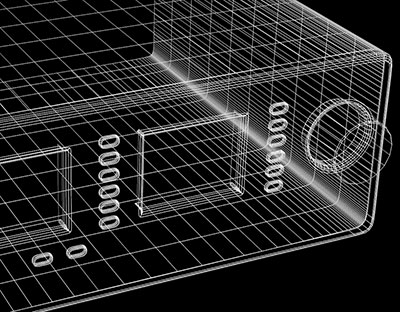3 MIN. READ

What could possibly be better for electronics than 3D printing? If you guessed using its capabilities to print circuit boards (the foundation of most electronic devices), you are exactly right.
3D printing is well on its way to revolutionizing the printed circuit board (PCB) industry. It is almost single-handedly responsible for the newfound ability to manufacture these devices at a fraction of the cost of traditional methods. This approach also conserves resources, time and manpower to greatly improve operational efficiency.
Best of all, additive manufacturing enables PCB makers to test ideas for prototypes much quicker and easier than they previously could to significantly reduce time to market for new products. By pairing this approach with modern methods for automating the testing of PCBs, organizations get the best of both worlds to boost their productivity and revenues from making these products.
Benefits of additive manufacturing
Regardless of the specific use case, 3D printing offers many benefits for manufacturers. Some of the most noteworthy include:
- Decreased waste: Additive manufacturing, a synonym for 3D printing, enables companies to only use the materials they need to create products. The efficiency of this newer approach decreases waste.
- Reduced time: 3D printing minimizes the number of steps required to work raw materials into finished products, which accelerates the process.
- Better quality: While manual work is subject to the individual ability of the person performing it, the accuracy of printing goods with machines is both higher and repeatable, leading to greater levels of quality.
Advantages of three-dimensional PCBs
The gains from creating PCBs with 3D techniques are considerable. Largely due to the improved productivity this method enables, organizations can consistently:
- Save costs: When PCBs were crafted from flat boards, creating them involved a resource-intensive, expensive series of procedures that was frequently outsourced. The quickness with which additive manufacturing produces these boards allows companies to perform this work in house, retain all of its intellectual processing and minimize expenses while doing so.
- Improve products: Vendors can make multilayer circuit boards with these additive techniques. You can leverage these double boards to match the shape of any product, which is key for satisfying customers.
- Increase agility: These 3D printing tools let manufacturers customize the type of boards they craft to dynamically fulfill the requirements of any particular customer. Without them, personalizing products for consumers would require a lengthy redesign period that is impractical. With them, companies can swiftly make these boards on demand to support personalization.
Prototyping gains
Devising prototypes of new designs is usually a painfully slow process. Additive manufacturing eliminates this bottleneck by enabling companies to rapidly adjust existing models for varying requirements.
This way, designers can quickly test new ideas by applying them to existing designs. They can also leverage an array of modern tools for testing these PCBs before they are actually printed, which is critical for conserving expenses in this stage of development.
Moreover, all of this work — designing, testing and producing approved prototypes — is handled without expensive third-party input (which is where most prototyping costs usually escalate). This contemporary approach consistently diminishes time to market and the expenses required to do so.
3D Printing to increase Productivity
3D printing is an effective means of increasing productivity, decreasing expenditures and meeting customer demands for PCBs. It is modernizing this aspect of the electronics industry to meet the contemporary pace of business. If you craft these boards and are not using this method yet, do not be surprised if your competitors are.
Despite the efficacy of 3D printing, manufacturers still have to test PCBs to ensure they work correctly. Huntron is at the forefront of this sector, providing test and diagnostic solutions for electronic PCBs. To learn more about their products, contact Huntron today.
Meta Title:
Perfecting PCBs with 3D printing
Meta Description:
Wondering why 3D printing is becoming a necessity in the PCB industry? Learn how its cost efficiencies and time savings are increasing productivity to reshape electronics.
Meta Keywords:
3D printing
Email Summary: 3D printing is rapidly taking over the PCB industry. Learn how its advantages for lower costs, greater efficiency and reduced time to market are transforming manufacturing.

